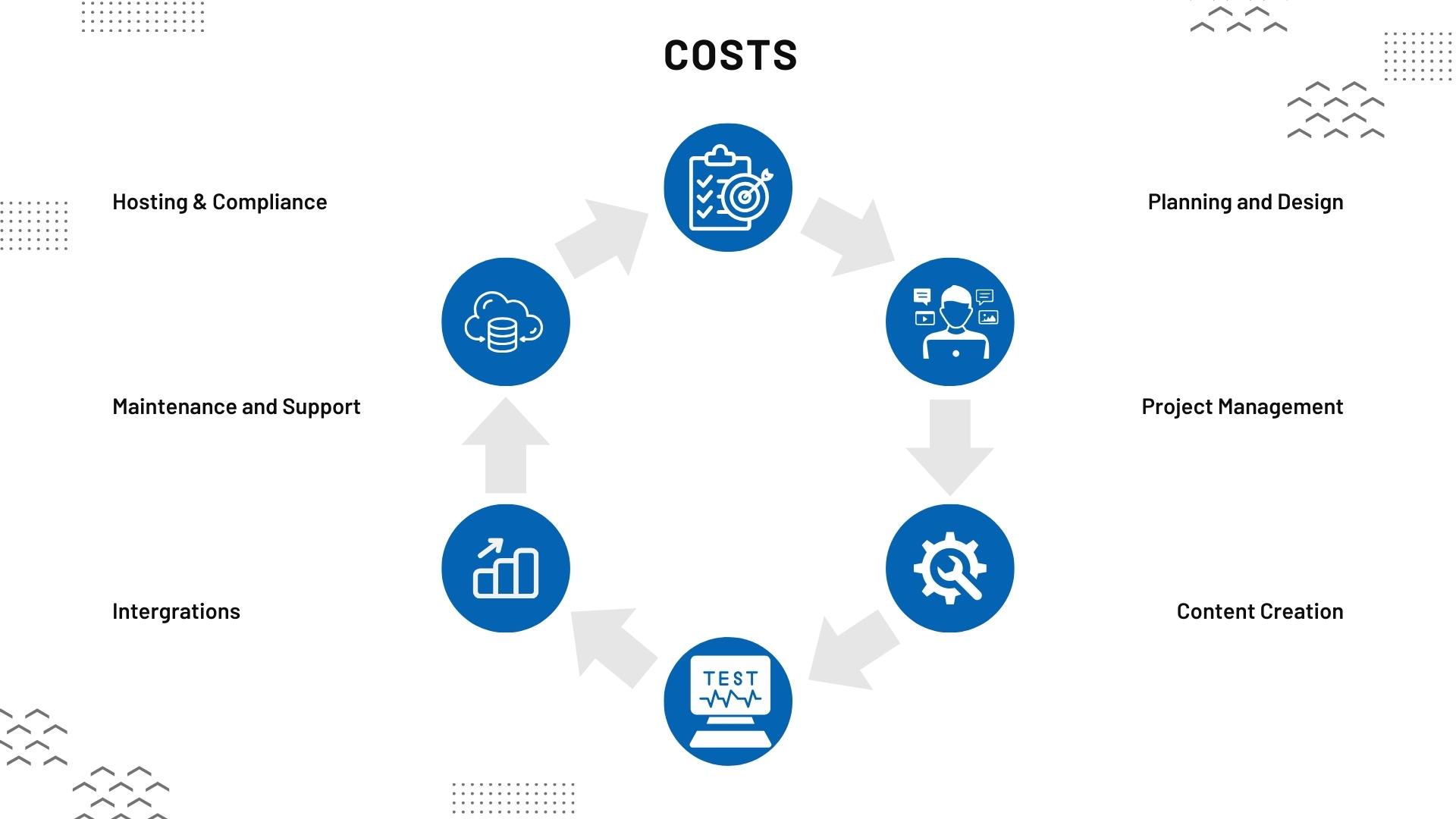Hiring a website designer is a crucial step for businesses looking to establish a strong online presence. However, the cost of building a website can be more than meets the eye. Many business owners underestimate the expenses associated with web development, leading to budget overruns and unforeseen challenges. In this article, we'll explore the often-overlooked costs of developing a web application and how to navigate them.
When hiring a website designer, it's essential to ask the right questions. Here are Top Questions to Ask When Interviewing Web Designers that can help you make an informed decision.
Freelance Web Designer vs. Design Agency
Before making a choice, consider whether you need a Freelance Web Designer vs. a Design Agency for your project. Each has its advantages and drawbacks, so understanding your specific needs is crucial.
Building a strong portfolio is vital for web designers. Explore tips on Building a Web Designer's Strong Portfolio to ensure that you are hiring a designer with the right experience and skills for your project.

#1 - Planning and Design
Building a successful web application starts with meticulous planning and design. Before diving into development, it's essential to have a clear understanding of your business goals and user needs. Investing in planning and design services, which may cost tens of thousands or more, is a necessary step. It ensures that your web application is user-friendly, functional, and aligns with your business objectives. Choosing to wing it can lead to greater costs in the long run.
#2 - Project Management
Project management is a vital component of any successful web application development project. While the exact percentage of a project's budget that should be allocated to project management will vary depending on the size and complexity of the project, experts generally recommend that businesses allocate between 10% and 20% of their project budget to project management. This investment ensures that the project runs smoothly, stays on track, and meets the desired quality standards. The cost of project management may be bundled into a fixed bid or other talent’s hourly rate, but be sure to ask who is responsible for actually getting your project across the finish line on time.
#3 - Content Creation and Migration
In addition to content creation and migration, businesses also need to consider the costs associated with writing marketing content, conducting content audits, and setting up reporting for content performance. These services can consume between 15% and 25% of the initial development cost of your web application, depending on the scope of the project. Writing marketing content requires specialized skills and a deep understanding of your target audience, while content audits and performance reporting require experience and expertise in data analysis and content strategy. Neglecting these steps can result in a web application that fails to attract and retain users or fails to deliver the desired business outcomes. By investing in marketing content creation, content audits, and performance reporting, businesses can ensure that their web application's content remains fresh, relevant, and aligned with their business objectives. This investment can result in increased user engagement, improved brand reputation, and higher revenue over time.
#4 - Testing and Quality Assurance
Web Application Testing and quality assurance are essential components of any web application development project. You need to ensure that your web application is bug-free, performs well, and meets your quality standards. Testing and quality assurance services can cost an average of 15-25% of the project investment. However, the cost of not testing and ensuring the quality of your web application can be much higher in terms of lost revenue, the pain of drawn out bug fixes, damage to your brand reputation, and potential legal liability.
#5 - Integration with Other Systems
Web applications often require integration with other systems, such as customer relationship management (CRM) software, e-commerce platforms, and marketing automation tools. Integrating these systems can be a complex and time-consuming process, requiring specialized skills and knowledge. Remember that deeply integrating different systems often means development teams from two products cooperating efficiently, and that’s not always easy to put a price on.
#6 - Maintenance and Support
Once your web application is up and running, it requires ongoing maintenance and support to ensure that it remains functional, secure, and up to date. Maintenance and support services typically consume between 10% and 20% of the initial development cost of your web application, depending on its size and complexity. However, neglecting this step can result in a web application that fails to meet the evolving needs of your business and users, potentially leading to lost revenue and damage to your brand reputation. By allocating the appropriate percentage of your budget to maintenance and support services, businesses can ensure that their web application remains in optimal condition and continues to serve their users effectively.
#7 - Hosting & Compliance
Securely hosting your web application following compliance regulations is an essential aspect of website design and development. Hosting costs can vary widely depending on the hosting provider and the level of compliance controls required by your industry. For example, if your web application handles sensitive user data, you may need to comply with HIPAA, GDPR, or other industry-specific regulations. Failure to comply with these regulations can result in costly fines and legal action. It is important to allocate the appropriate percentage of your budget to hosting and managing compliance controls to ensure your web application remains secure and compliant with the relevant regulations.
#8 - Ongoing Improvements
In addition to ongoing maintenance and support, web applications often require ongoing development improvement following the Agile methodology. Agile development emphasizes frequent iterations, continuous improvement, and adapting to changing requirements. This requires ongoing investment in development services and can consume between 20% and 30% of the initial development cost of your web application, depending on its size and complexity. However, neglecting ongoing development improvement can result in a web application that fails to meet the evolving needs of your business and users. By investing in ongoing development improvement, businesses can ensure that their web application remains competitive, up to date, and aligned with their business objectives.
In conclusion, building a web application has many costs. By taking a comprehensive approach to your project plan and investing in essential services, such as project management, testing and quality assurance, maintenance and support, hosting, and ongoing development improvement, businesses can ensure that their web application meets the evolving needs of their business and users, and achieves their desired outcomes.
Facts and Figures
Sources:
-
Cleart. (n.d.). Don't Let Your Web Development Project Fail. Retrieved from https://www.cleart.com/don-t-let-your-web-development-project-fail.html
-
ZDNet. (n.d.). Research: 25 percent of web projects fail. Retrieved from https://www.zdnet.com/article/research-25-percent-of-web-projects-fail/
-
EarthWeb. (n.d.). Project Management Statistics. Retrieved from https://earthweb.com/project-management-statistics/
-
Calleam. (n.d.). What to Prevent Failure. Retrieved from https://calleam.com/WTPF/?page_id=1445
-
Smart Insights. (n.d.). Percentage of Projects Fail [Chart of the Day]. Retrieved from https://www.smartinsights.com/managing-digital-marketing/web-project-management/percentage-projects-fail-chartoftheday/
